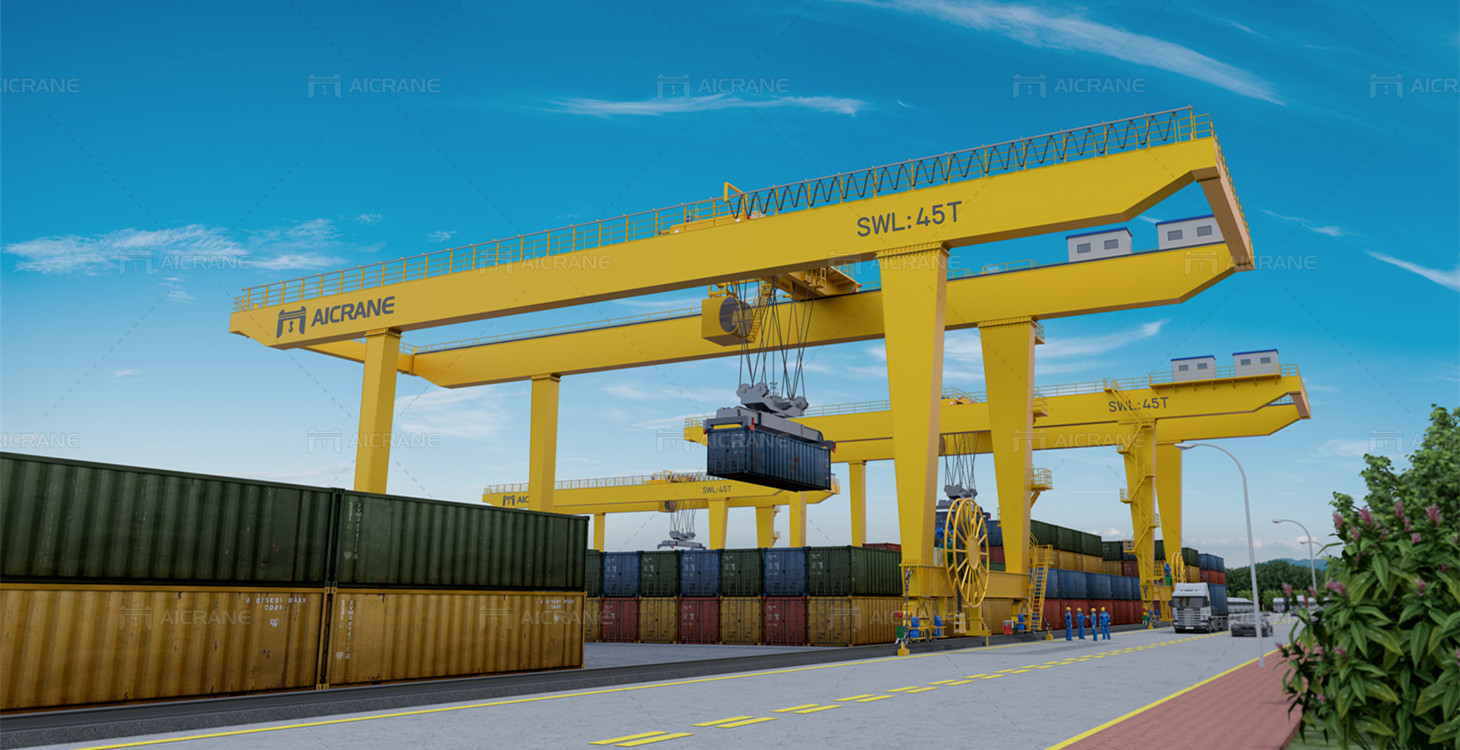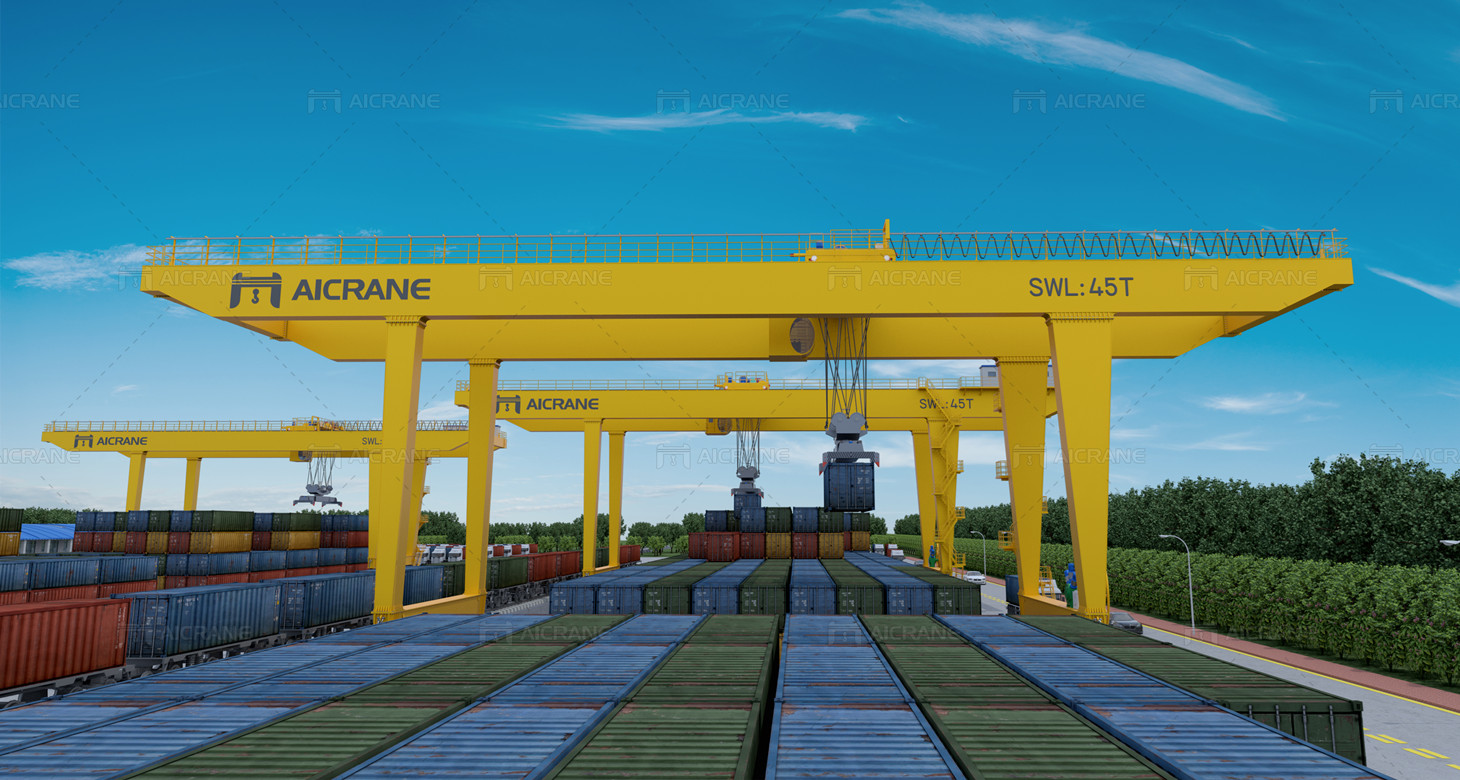Installing a container handling crane, also known as a container gantry crane, is a complex process that requires careful planning, precise execution, and adherence to safety standards. These cranes play a crucial role in the efficient movement of containers in ports, terminals, and logistics centers. In this comprehensive guide, we will outline the step-by-step process of installing a container handling crane, highlighting key considerations, equipment needed, and safety measures.

Step 1: Pre-Installation Preparation
Before beginning the installation process, thorough preparation is essential to ensure a smooth and successful installation. Here are the key preparatory steps:
Site Assessment: Conduct a detailed assessment of the installation site, including ground conditions, available space, clearance heights, and proximity to other structures or equipment.
Foundation Design: Develop a foundation design based on the crane specifications, considering factors such as soil bearing capacity, seismic conditions, and environmental factors.
Permits and Approvals: Obtain necessary permits, approvals, and clearances from local authorities, regulatory bodies, and stakeholders.
Logistics Planning: Plan logistics for transporting crane components, equipment, and personnel to the installation site, ensuring timely delivery and efficient coordination.
Step 2: Foundation Construction
The foundation serves as the base for the crane structure, providing stability, support, and load-bearing capacity. Follow these steps for foundation construction:
Excavation: Excavate the foundation pit according to the approved design drawings, ensuring proper dimensions, depth, and alignment.
Reinforcement: Install steel reinforcement bars (rebars) within the foundation pit as per engineering specifications and structural requirements.
Concrete Pouring: Pour high-strength concrete into the foundation pit, covering the reinforcement bars completely and achieving the specified compressive strength.
Curing: Allow the concrete to cure and gain strength over the recommended curing period, typically ranging from days to weeks depending on the concrete mix.
Step 3: Crane Component Assembly
Once the foundation is ready, proceed with assembling the crane components. This includes the main structural elements, such as the gantry frame, trolley, hoist, boom, and electrical systems. Follow these assembly steps:
Gantry Frame: Assemble the gantry frame sections, including the legs, horizontal beams, cross braces, and connection plates. Use appropriate fasteners, welding techniques, and alignment tools to ensure structural integrity.
Trolley and Hoist: Install the trolley on the gantry frame rails and mount the hoist mechanism securely. Connect electrical wiring, control panels, limit switches, and safety devices as per manufacturer instructions.
Boom and Spreaders: If the crane is equipped with a boom or spreader system for container lifting, assemble and mount these components according to design specifications.
Electrical Systems: Install power supply cables, control cables, pendant controls, safety interlocks, and lighting systems as required. Ensure proper insulation, grounding, and electrical safety measures are in place.

Step 4: Crane Erection and Installation
With the crane components assembled, proceed with erecting the crane structure and installing it onto the foundation. Follow these steps for crane erection and installation:
Positioning: Use cranes, forklifts, or specialized lifting equipment to position the gantry frame and trolley assembly over the foundation. Ensure precise alignment and clearance with surrounding structures.
Anchor Bolts: Securely anchor the crane to the foundation using anchor bolts, anchor plates, and grouting materials. Follow recommended torque specifications and grouting procedures for optimal anchoring.
Alignment and Leveling: Use precision instruments such as laser levels, inclinometers, and spirit levels to align and level the crane structure horizontally and vertically. Adjust leveling bolts or shims as needed for precise alignment.
Structural Connections: Verify and tighten all structural connections, fasteners, and welds to ensure stability, rigidity, and load-bearing capacity. Conduct thorough inspections for any signs of structural defects or misalignments.
Step 5: Testing and Commissioning
After completing the installation, perform comprehensive testing and commissioning to ensure the gantry crane operates safely, efficiently, and in compliance with regulatory standards. Follow these testing and commissioning procedures:
Functional Testing: Conduct functional tests on crane components, including hoist operation, trolley movement, boom extension, and load handling capabilities. Verify proper functioning of safety features, limit switches, emergency stops, and alarms.
Load Testing: Perform load tests to verify the crane’s lifting capacity, stability, and performance under varying load conditions. Use calibrated test weights or containers filled with water to simulate loads accurately.
Electrical Checks: Test electrical systems, control panels, motor operation, and power supply connections for proper functionality, insulation, and grounding. Verify voltage levels, current ratings, and circuit protection mechanisms.
Safety Inspections: Conduct safety inspections and risk assessments to identify and mitigate potential hazards, such as overhead obstructions, electrical hazards, and operational risks. Ensure compliance with safety regulations and standards.
Step 6: Training and Handover
Once testing and commissioning are successfully completed, provide training to gantry crane operators, maintenance personnel, and other relevant staff. Train operators on gantry crane operation procedures, safety protocols, emergency response, and routine maintenance tasks. Provide comprehensive documentation, operation manuals, and maintenance schedules for reference.
Step 7: Ongoing Maintenance and Support
After installation and commissioning, establish a proactive maintenance program for the container handling crane. Conduct regular inspections, lubrication, calibration, and preventive maintenance to ensure optimal performance, reliability, and longevity. Keep detailed maintenance records, track equipment performance, and address any issues promptly to minimize downtime and maximize productivity.
In conclusion, the installation of a container handling crane involves meticulous planning, precise execution, and thorough testing to ensure safe and efficient operation. By following these steps and best practices, you can successfully install a container handling crane and enhance material handling capabilities in port, terminal, or logistics environments.